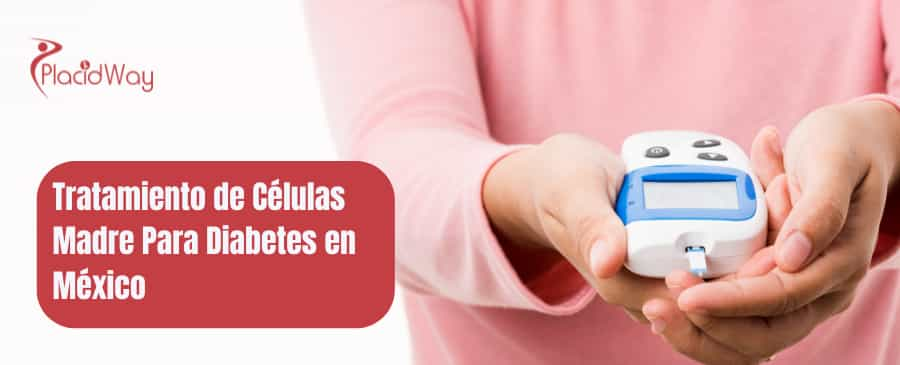
La diabetes es una enfermedad crónica que afecta a millones de personas en todo el mundo. En México, la prevalencia de esta condición ha ido en aumento, convirtiéndose en un problema de salud pública significativo. Recientemente, los tratamientos con células madre han emergido como una opción prometedora para abordar tanto la diabetes tipo 1 como la tipo 2. Este artículo explora el estado actual de los tratamientos con células madre para la diabetes en México, sus beneficios potenciales y los desafíos que enfrentan.
¿Qué son las células madre?
Las células madre son células únicas con la capacidad de desarrollarse en diferentes tipos de células en el cuerpo. Existen principalmente dos tipos: las células madre embrionarias y las células madre adultas. Estas células tienen el potencial de regenerar tejidos dañados, lo que las hace especialmente útiles en el tratamiento de diversas enfermedades, incluida la diabetes.
Diabetes y células madre
La diabetes tipo 1 es una enfermedad autoinmune en la que el sistema inmunológico del cuerpo ataca y destruye las células beta productoras de insulina en el páncreas. Por otro lado, la diabetes tipo 2 se caracteriza por la resistencia a la insulina y la incapacidad del cuerpo para utilizar eficazmente la insulina producida.
El tratamiento con células madre para la diabetes se centra en la capacidad de estas células para regenerar o reemplazar las células beta dañadas, restaurando así la producción de insulina. Además, se investiga su potencial para modular la respuesta inmune en pacientes con diabetes tipo 1, reduciendo la destrucción autoinmune de las células beta.
Costo del Tratamiento con Células Madre para Diabetes en México
El costo del tratamiento con células madre para la diabetes en México puede variar significativamente dependiendo de varios factores, incluyendo la ubicación de la clínica, la experiencia del personal médico, y el tipo específico de tratamiento administrado. En general, los precios pueden oscilar entre $6,000 y $8,000 USD por ciclo de tratamiento. Es importante tener en cuenta que, además del tratamiento principal, pueden haber costos adicionales asociados con consultas, exámenes pre y post tratamiento, y seguimiento médico.
| Factor | Costo Aproximado (USD) |
|---|---|
| Tratamiento principal | $6,000 - $8,000 |
| Consultas iniciales | $100 - $500 |
| Exámenes pre-tratamiento | $200 - $1,000 |
| Exámenes post-tratamiento | $200 - $1,000 |
| Seguimiento médico | $100 - $300 por consulta |
Estos costos pueden variar y es crucial que los pacientes se informen detalladamente sobre lo que está incluido en el precio del tratamiento antes de tomar una decisión. También es recomendable consultar con varias clínicas para obtener una idea más clara de los costos y opciones disponibles.
Clínicas Recomendadas en México
- Dr. Omar Gonzalez Integra Medical Center: Especializada en medicina deportiva y tratamientos con células madre para lesiones musculoesqueléticas.
- Renue Medical Centre: Reconocido por sus tratamientos innovadores en el campo de la medicina regenerativa.
- Stem Health en Guadalajara: Famosa por sus avanzados tratamientos de células madre para diversas condiciones médicas.
Avances en México
México ha sido uno de los países que ha mostrado un interés creciente en la investigación y aplicación de tratamientos con células madre. Instituciones de salud y centros de investigación en todo el país están llevando a cabo estudios clínicos para evaluar la eficacia y seguridad de estos tratamientos en pacientes con diabetes.
Uno de los avances más notables es la creación de bancos de células madre, donde se recolectan y almacenan células madre para su uso futuro en terapias regenerativas. Además, se están desarrollando protocolos específicos para la reprogramación de células madre, permitiendo la diferenciación de estas células en células beta funcionales.
Beneficios potenciales
Los tratamientos con células madre ofrecen varios beneficios potenciales para los pacientes con diabetes, entre los que se incluyen:
- Regeneración de células beta: La capacidad de las células madre para convertirse en células beta funcionales podría restaurar la producción de insulina en pacientes con diabetes tipo 1.
- Reducción de la resistencia a la insulina: En la diabetes tipo 2, las células madre podrían ayudar a mejorar la sensibilidad a la insulina y reducir la resistencia.
- Disminución de la dependencia de insulina externa: Los pacientes podrían reducir o eliminar la necesidad de inyecciones diarias de insulina.
- Mejora de la calidad de vida: Al reducir las complicaciones asociadas con la diabetes, los pacientes podrían experimentar una mejora significativa en su calidad de vida.
Desafíos y consideraciones
A pesar de los avances prometedores, existen desafíos y consideraciones importantes que deben abordarse:
- Seguridad y eficacia: Aún se necesitan más estudios clínicos para garantizar la seguridad y eficacia a largo plazo de los tratamientos con células madre.
- Accesibilidad y costo: Los tratamientos con células madre pueden ser costosos y no están ampliamente disponibles en todas las regiones del país.
- Regulación y estándares: Es esencial establecer regulaciones y estándares claros para garantizar la calidad y seguridad de los tratamientos.
El tratamiento de células madre para la diabetes en México representa una nueva esperanza para millones de personas que viven con esta enfermedad. Aunque aún se encuentran en fases experimentales y enfrentan varios desafíos, los avances científicos y médicos están acercando cada vez más a los pacientes a una posible cura. La investigación continua y el apoyo gubernamental serán cruciales para hacer realidad esta prometedora terapia en el futuro cercano.







.png)


.jpg)






Share this listing